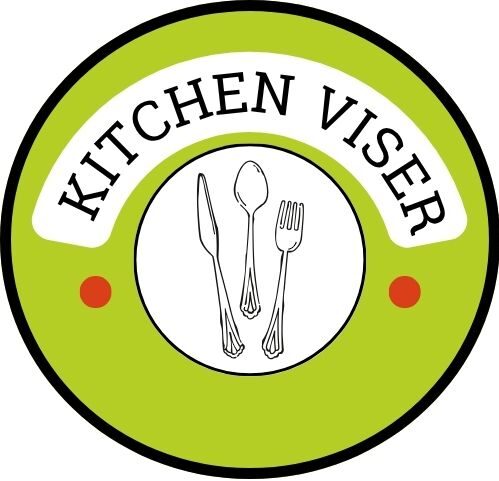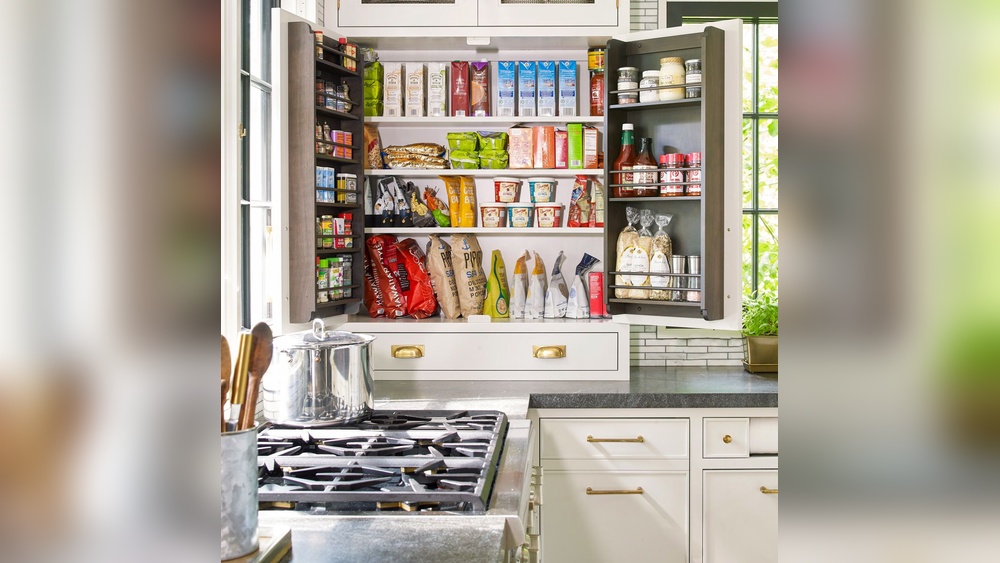Is your kitchen cabinet a jumble of pots, pans, and random items that make cooking more frustrating than fun? Imagine opening your cabinets and instantly finding exactly what you need, right where you expect it.
When you arrange things in your kitchen cabinets the right way, you save time, reduce stress, and even make meal prep more enjoyable. In this guide, you’ll discover simple, practical steps to organize your kitchen cabinets by creating smart zones, grouping similar items, and using clever storage tricks.
Ready to transform your kitchen into a smooth-running space? Keep reading to unlock easy tips that anyone can follow—and watch your kitchen chaos turn into calm.
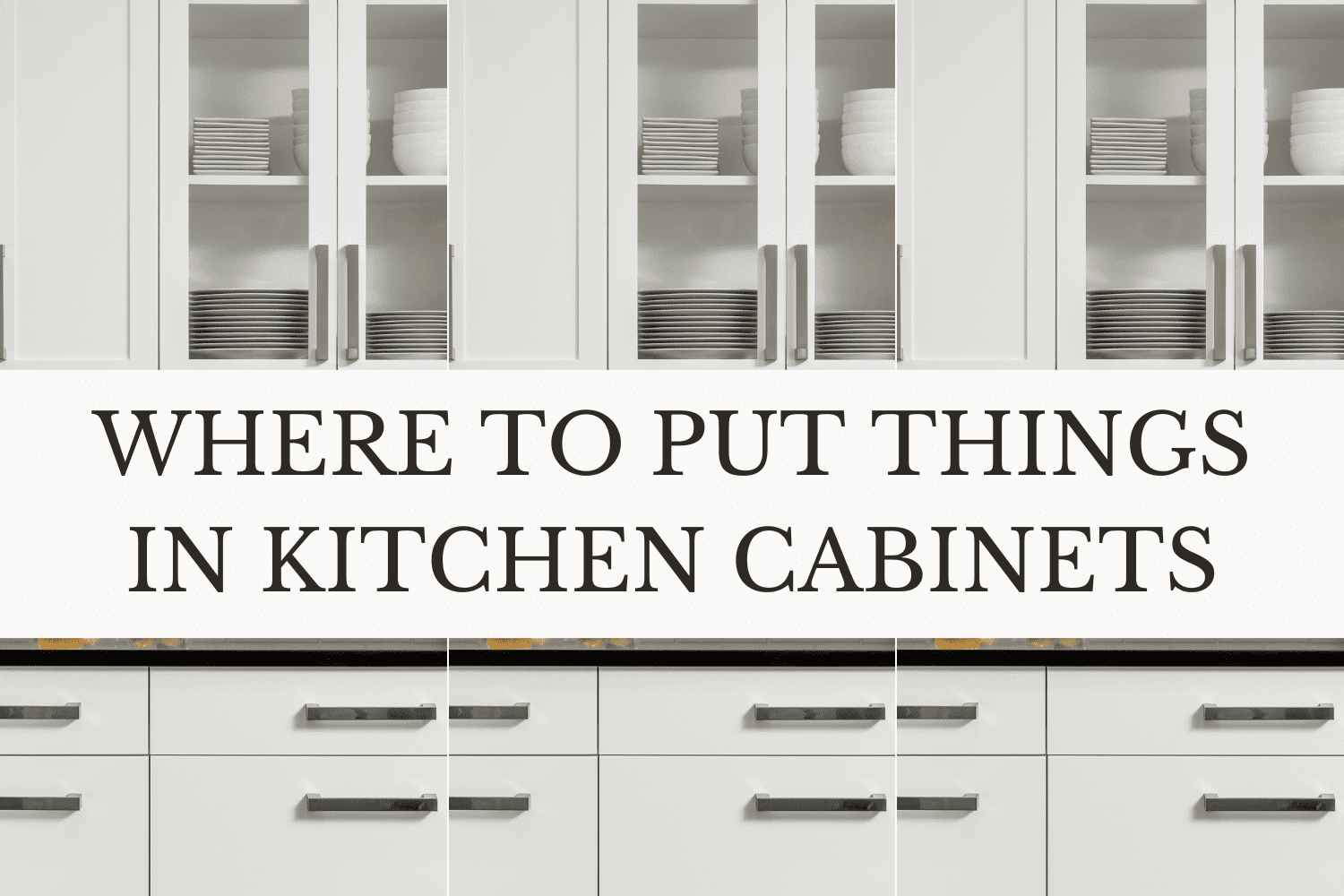
Create Kitchen Zones
Cooking Area Setup should be near the stove. Store pots, pans, and utensils here for easy reach while cooking. Keep items you use most often in the front. This saves time and makes cooking easier.
Cleaning Zone Placement works best near the sink or dishwasher. Place plates, bowls, and glasses in cabinets close to the dishwasher. This helps unload dishes quickly and keeps the area tidy.
Food Preparation Spot needs clear space and storage for knives, cutting boards, and mixing bowls. Keep these items near your main countertop. Group similar tools together to stay organized and work faster.
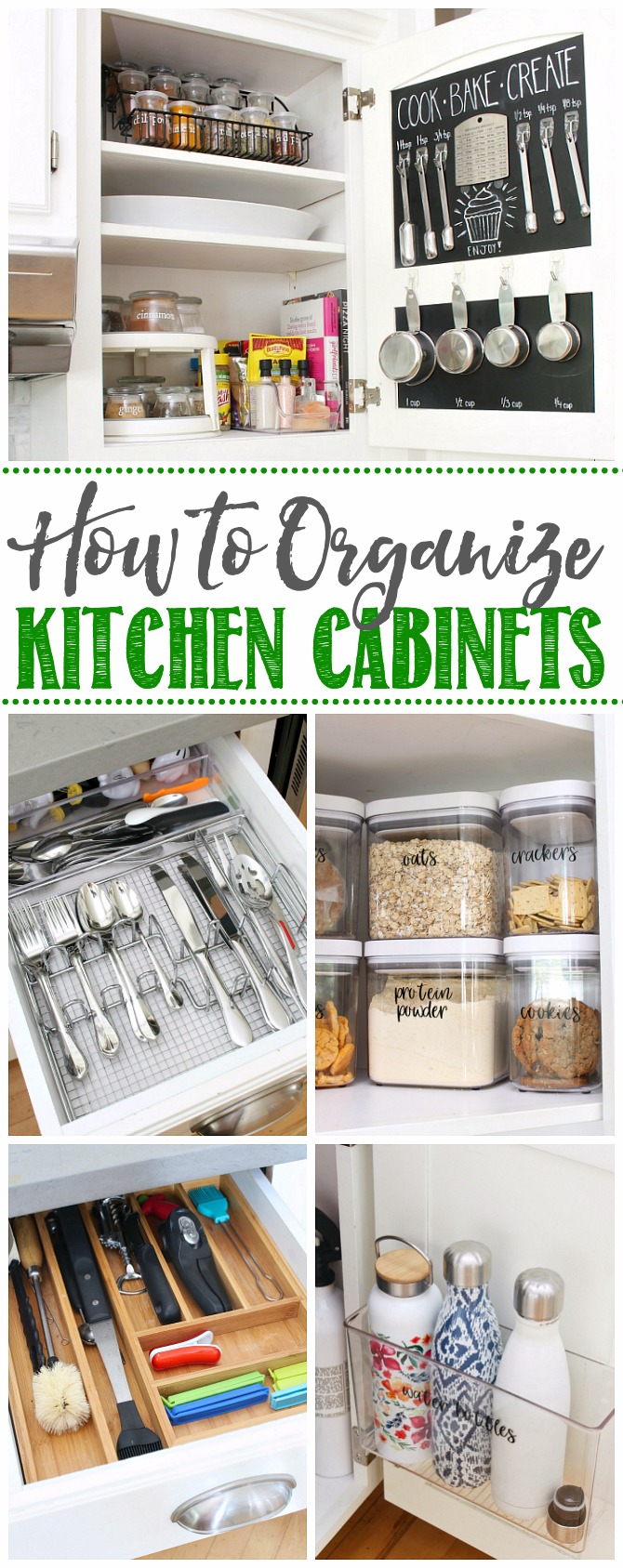
Arrange By Frequency
Daily use items should be placed in the most reachable cabinets. These include plates, cups, and cooking tools used every day. Keep them near the stove or sink for quick access. This saves time and effort during meal prep and cleaning.
Occasional use storage is best for items used less often. These can go in higher or lower cabinets. Examples are holiday dishes, special baking tools, or large pots. Keeping these away from daily items frees up space and reduces clutter.
Sort By Item Type
Heavy items like pots and pans should go in the lower cabinets. This keeps them easy to lift without straining. Light items such as plastic containers and plates fit well in upper cabinets. These are easier to reach and handle.
Keep frequently used appliances close to the work areas. For example, place the toaster or blender near the counter where you use them most. Store less used appliances like slow cookers or waffle makers in higher or less reachable spots.
| Item Type | Best Cabinet Location |
|---|---|
| Heavy Items | Lower Cabinets |
| Light Items | Upper Cabinets |
| Daily Use Appliances | Near Countertops |
| Rarely Used Appliances | Higher or Less Accessible Cabinets |
Use Vertical Space
Shelf risers help use vertical space well. They create extra layers inside cabinets. This lets you stack items like plates or bowls without crushing them.
Vertical dividers keep trays, cutting boards, or baking sheets upright. This makes them easier to grab and saves room.
Both tools stop clutter and make cabinets look neat. Using vertical space means more storage without adding shelves.
Utilize Cabinet Doors
Hooks and racks attached to cabinet doors create extra space. These can hold measuring spoons, small pots, or dish towels. Using the inside of cabinet doors keeps items easy to reach and frees up shelf room.
Additional storage options include small baskets or magnetic strips on doors. Baskets hold spice jars or lids, while magnetic strips can keep knives or metal tools organized. These simple tools maximize every inch of your cabinet space.
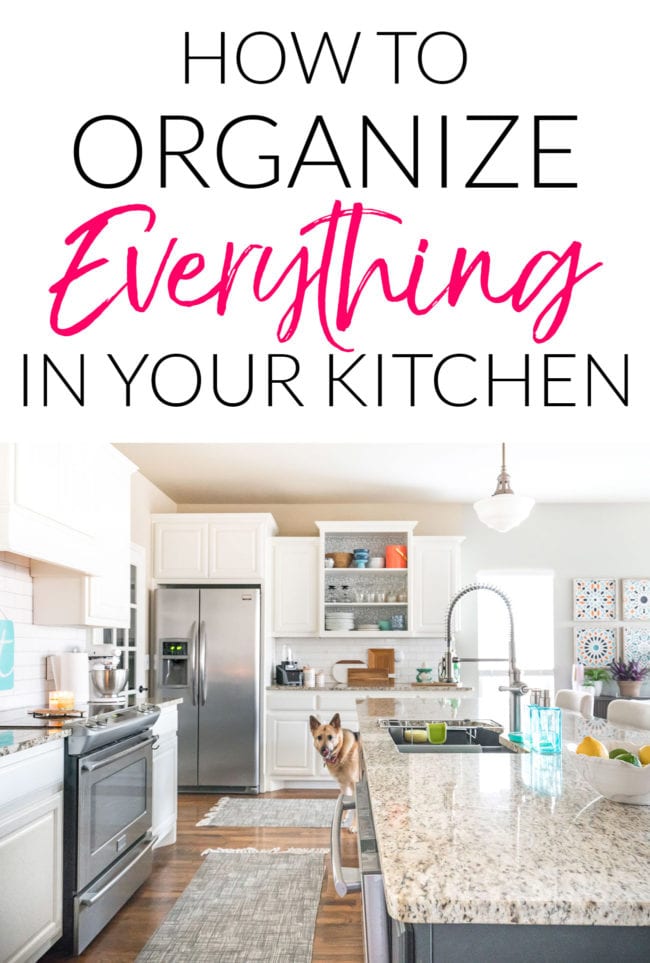
Organizers And Containers
Using clear labeled containers helps find items quickly. You see what is inside without opening them. This saves time and keeps the cabinet neat.
Stacking similar items saves space. For example, place all spices together or stack all cans in one spot. This makes the kitchen look tidy and organized.
Clear containers also stop food from getting stale or spilled. Labels tell you what is inside and when it expires. This avoids waste and confusion.
Stacking should be done carefully to avoid tipping. Use containers that fit well together. Keep heavier items at the bottom and lighter ones on top.
Declutter Before Organizing
Start by removing everything from your kitchen cabinets. This step helps to see what you have and what you no longer need. Sort items into three piles: keep, toss, and donate. Check for expired food and broken tools. Clearing out clutter makes organizing easier and faster.
Clean the empty cabinets with a damp cloth. Dry them well before putting items back. This keeps your kitchen fresh and hygienic. Think about how often you use each item. Place daily-use items in the easiest-to-reach spots. Store rarely used things higher or deeper.
Decluttering first creates space for a neat, functional kitchen. It also helps avoid buying duplicates. A tidy cabinet saves time and reduces stress during cooking.
Maximize Accessibility
Place items you use often at eye level or just below. This makes grabbing them quick and easy. Keep heavy items like pots and pans on the lowest shelves to avoid accidents and strain.
Store lighter items such as plates and glasses on middle shelves near the dishwasher. Group items by how often you use them. For example, keep daily use items in front and special occasion items in the back.
This setup helps save time and reduces kitchen mess. Easy access means less bending and stretching. The kitchen feels more open and organized.
Frequently Asked Questions
How Do You Decide Where To Put Things In Kitchen Cabinets?
Organize kitchen cabinets by task zones: store pots near the stove, dishes by the dishwasher, and prep tools near counters. Keep daily items accessible and heavy or rarely used items lower or higher. Group similar items together for easy finding and efficient workflow.
What Are The 9 Steps In Organizing A Kitchen Cabinet?
The 9 steps are: 1) Empty cabinets, 2) Sort items by type, 3) Clean shelves, 4) Create zones by task, 5) Store frequently used items front and center, 6) Place heavy items low, 7) Use vertical organizers, 8) Utilize cabinet doors, 9) Label zones for easy access.
What Kitchen Cabinet Color Is Outdated?
Outdated kitchen cabinet colors include avocado green, harvest gold, and dark, glossy wood tones. Bright white and soft neutrals are more timeless.
How Should I Arrange My Kitchen Items?
Arrange kitchen items by zones: keep pots near the stove, plates near the dishwasher, and prep tools near counters. Store daily items within easy reach and heavy or rarely used items lower or higher. Group similar items together and use vertical organizers to maximize space efficiently.
Conclusion
Organizing kitchen cabinets makes cooking easier and faster. Group items by use and keep daily tools within reach. Store heavy or rare items in lower or distant cabinets. Create zones near cooking, cleaning, and prep areas for smooth workflow. Regularly check and tidy cabinets to maintain order.
Small changes lead to a more functional kitchen space. Keep it simple and consistent to enjoy your kitchen every day.

Yes, working as , Food Blogger and Product Reviewer for last 6 years. Here you will get amazing deals for Smart kitchen products. I am your best source for the latest update in cooking trends. I provide insightful articles, reviews, and analysis on cutting-edge kitchen gadget. My mission is to empower readers with the knowledge they need to stay ahead in a rapidly evolving coking world. Join me as we explore the future of food technology and how it shapes our lives today and tomorrow.
